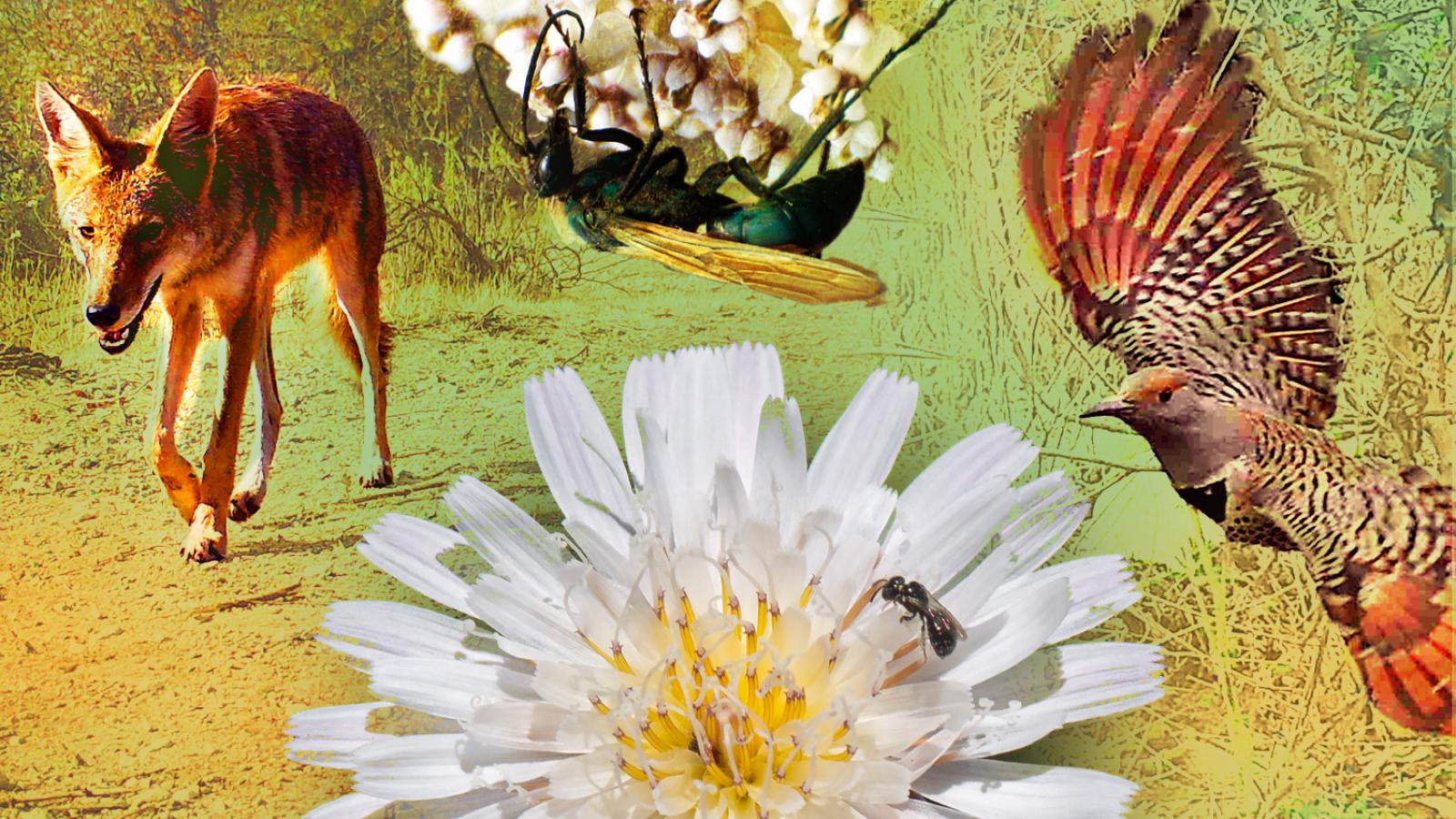With its extraordinary array of plants and animals, many of them under threat, Southern California is in what is known as a biodiversity hotspot.
At Pomona, students who study the region’s flora and fauna have access to the nearby Bernard Field Station, an 86-acre preserve where researchers from The Claremont Colleges and beyond gather data examining the importance of the endangered sage scrub ecosystem.
Yet the scope of undergraduate research is sometimes limited by time, place and other factors.
“Over the years, we've had this experience where students do great research mentored by our faculty,” says Professor of Biology Nina Karnovsky. “And the only really big difference between professional research and the student research is that the student research happens over a really short period of time, like maybe a senior thesis or an independent study. Then we would go to these scientific meetings and we'd see other undergraduates doing similar research. And we thought, wouldn't it be wonderful for the students to be able to collaborate as we would collaborate as ecologists?”
To help make that happen, Karnovsky and Wallace “Marty” Meyer, director of the Bernard Field Station and an associate professor of biology, were awarded a $71,011 National Science Foundation (NSF) grant to develop a network of professors at Southern California colleges to expand the research potential for undergraduates throughout the region.
“Our main focus is training the next generation of ecological leaders,” Meyer says.
The project, “Developing a Faculty Network in a Biodiversity Hotspot: Research Experiences in Southern California for Undergraduate Ecologists Network,” is funded by an incubator grant from the Research Coordination Networks in Undergraduate Biology Education (RCN-UBE) program. The effort had its origins in Pomona’s 2018 Presidential Challenge Grants, an initiative intended to support highly creative and collaborative research projects that transcend boundaries of all kinds.
The focus is on students at primarily undergraduate institutions, as opposed to those at major research universities.
After creating a steering committee that includes faculty from Cal Poly Pomona, Cal State Fullerton, Cal State San Marcos and Whittier College in addition to Pomona, Meyer and Karnovsky hope to build the backbone of the research network as well as a website by the end of the academic fiscal year. The NSF grant also includes funding for two undergraduate students to work on the project.
Examples of the need for such a network abound. It could be helpful if a student at one of the network colleges took the baton from a graduating student at another to continue a research project over a longer period, for instance. In addition, the climate and types of habitat can vary significantly within the Southern California region, and the ability to more easily compare data from different areas would be valuable.
“From a logistical standpoint, for us to do multi-site projects in-house, it gets very difficult,” Meyer says. “I had one project where we sampled nine sites, from the Santa Monica Mountains all the way to basically Yucaipa—the coast-to-inland gradient, is what we call it. And I remember my students were like, ‘Oh, yeah, I can come. I have a class at 2.’ Well, we went to the Santa Monica Mountains and even though we left at 4:30 in the morning to get to the Santa Monica Mountains, we still hit traffic and did not get them back in time for their class. So, these are the kind of things that if someone was making the collections at Pepperdine, this is something that could be done in a much more efficient way, a much more sustainable way, and then builds interaction. And this is basically what ecologists do. They just typically do it on a larger scale, across the United States or across the globe.”
Sometimes, the benefit of collaboration is in sharing techniques.
Karnovsky thinks about a “camera trap” project at Bernard Field Station.
“It's a motion-sensing camera, so it takes a picture of any motion in front of it,” she says. “It also takes lots of pictures of waving grass. And then at night, it uses infrared, so anything with heat will get a picture taken.”
What resulted was a mountain of photos to organize. Yet ideas from colleagues at other colleges simplified the effort.
“We know a lot of people are doing similar things and they have shared with me much more sophisticated ways of going through the photos and quantifying things,” Karnovsky says. “Knowing that they're working on it and have solved some of the problems that we were also experiencing, it's just given us a real boost.”
As ecology is a particularly collaborative field, learning to develop a network and work with researchers at other colleges is part of the educational experience, Meyer says.
“I think the students recognize how amazing it was when we've gone to regional meetings and they've seen other student presenters. They're like, ‘Wow, they're doing similar research.’ They're communicating about it and seeing that interaction is really important. And sometimes when you're at a smaller school like Pomona, you might have two or three people really deeply interested in conservation biology. And let's say you're at another [primarily undergraduate institution], like Whittier College, you might have one individual. So, you're isolated. We can make this bigger, broader community of conservation biologists. It's not only what we need, but it enhances the research community as well.”
